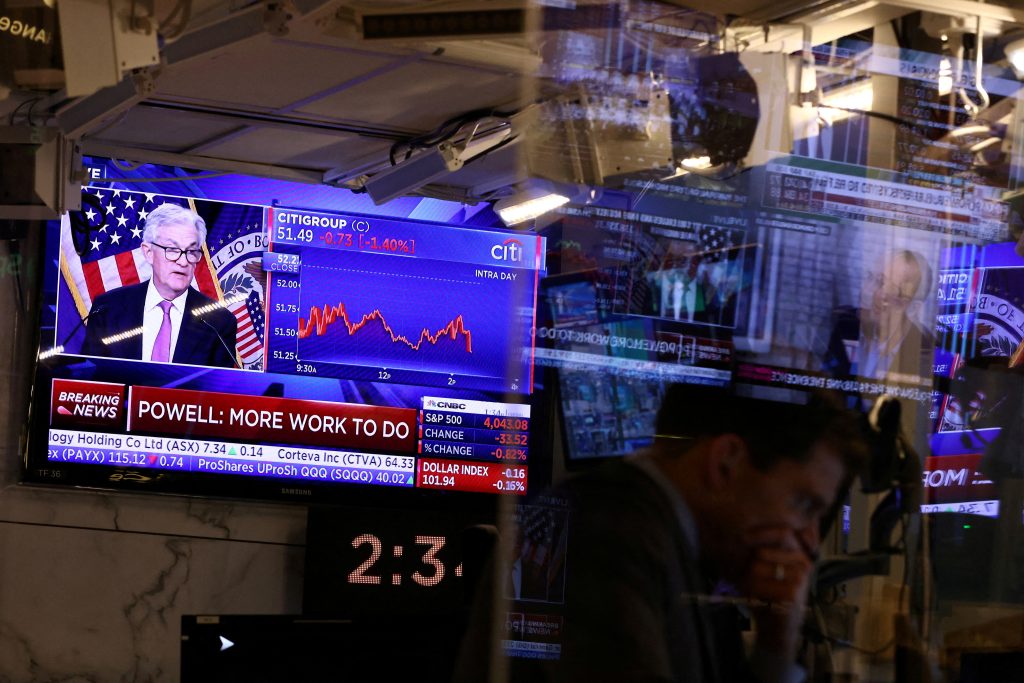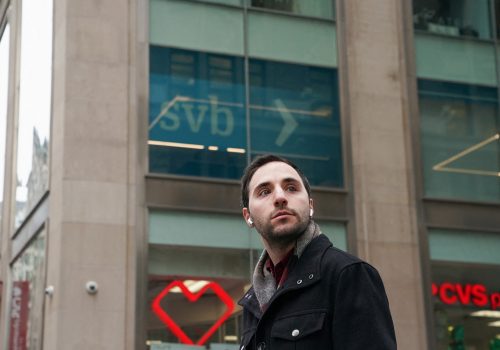For anyone who lived through the global financial crisis, the past week is feeling hauntingly familiar. A bank collapse followed by a weekend scramble in Washington to figure out a rescue plan. The public is told that this bank’s issues are unique, and the problem has been isolated. Soon after a bank in Europe is close to failing and needs its own government to save it.
But if you look past the surface, it’s clear that 2023 bears little similarity to 2008. The international financial system is much stronger today thanks to the lessons learned over the past decade—and that’s why this time policymakers stand a much better chance of containing the fallout.
Here are two key differences between now and then:
1. Moving fast, moving forcefully
In the period between Bear Stearns collapsing in March 2008 and Lehman Brothers going under that September, there was continuous handwringing in Washington and around the world about what to do. Debates on moral hazard, contagion, and how to use taxpayer money to save the financial sector consumed that entire summer. Many wanted to believe that Bear Stearns’s problems were the result of bad management and a failure to hedge against risk. At the time some analysts said the fallout would be limited. Sound familiar? By the time the Federal Reserve (Fed) and Treasury convinced Congress that the problem was systemic, it was almost too late.
This time around, policymakers took action quickly. Last Sunday the Fed, Treasury, and the Federal Deposit Insurance Corporation moved swiftly in response to Silicon Valley Bank’s failure. They surprised many with a complete protection for all of the bank’s depositors and a guarantee of one year of loans to other financial institutions. While some have understandably criticized the move (including US senators who grilled Treasury Secretary Janet Yellen on Thursday), it’s clear that the decision calmed markets and stabilized the situation for other banks.
Switzerland was paying attention. On Wednesday, as shares of banking giant Credit Suisse traded at record lows, the Swiss National Bank pledged a fifty-four-billion-dollar financial lifeline. To put that in perspective, the entire gross domestic product (GDP) of Switzerland is around eight hundred billion dollars. So the commitment of its central bank amounts to nearly 7 percent of the country’s GDP. The entire amount accessed under the Troubled Asset Relief Program in the United States—the largest financial rescue plan ever authorized—amounted to slightly more than 3 percent of US GDP.
Now comes the European Central Bank (ECB). Its president, Christine Lagarde, was a key player in 2008, serving as French finance minister and coordinating on a plan of action with then US Treasury Secretary Hank Paulson. So it should be no surprise that Lagarde and the ECB didn’t blink in today’s meeting. The governing council raised interest rates by half a percent, as expected, and sent a signal to markets that the ECB was fully prepared to step in and support the euro area banking system if needed. But she reminded reporters, “I was around in 2008, so I have clear recollection of what happened and what we had to do, we did reform the framework… And I think that the banking sector is currently in a much, much stronger position than where it was back in 2008.”
The bottom line is that instead of waiting to see what unfolds, central banks are being decisive.
2. More money, fewer problems
One of the challenges of 2008 was understanding the size of the problem. In the chaos of Lehman’s collapse, banks and regulators were scrambling to figure out just how many ‘toxic’ assets other banks held on their balance sheets. This time a similar effort is under way, but the problem is far less complex. These institutions are not dealing with mortgage-backed securities but instead US Treasuries—arguably the safest investment on the planet—and therefore it is much easier to find someone willing to step in and buy them up. That simply wasn’t the case last time around.
Meanwhile, thanks in part to the Dodd-Frank legislation that raised capital requirements for banks, the largest financial institutions have more money on hand to deal with potential problems. The charts below help show the difference from 2008:
The total deposit amount and the loan/deposit ratio in the overall US banking industry is extremely healthy. As we have seen, however, that doesn’t mean regional banks are going to emerge unscathed. It’s already clear that depositors want to move their money from smaller banks to bigger banks, and we can expect that trend to continue in the months ahead. In 2018, changes to Dodd-Frank exempted many regional banks from the kind of oversight that may have mitigated the current problems. Now, as regulators step up their oversight of mid-sized banks, the short-term result could be more regional banks having to shutter their doors. This will create domestic economic headwinds and presents its own problems of too much concentration of capital in the largest banks—but it is not a threat to global financial stability.
The data show that there is much more money in the system right now than there was in 2008, and there’s a huge market available for banks that are trying to resolve problematic parts of their balance sheets. It’s night and day from the abyss that confronted bankers and regulators in the fall of 2008.
At the end of the day, banking is about confidence. Customers need to have faith that their money is safe. Citizens need to be assured that their governments have a plan. It would be a mistake to hesitate, thereby sowing doubt in the markets and creating a problem worse than the one that actually exists.
Josh Lipsky is the senior director of the Atlantic Council’s GeoEconomics Center and a former adviser at the International Monetary Fund.
Further reading
Wed, Mar 15, 2023
Bailouts create a moral hazard even if they are justified. Is there another way?
New Atlanticist By Hung Tran
The US guarantee for Silicon Valley Bank and possible Swiss intervention for Credit Suisse raise important questions. Here's one alternative approach for large depositors.
Mon, Mar 13, 2023
Silicon Valley Bank failed: What happens next?
EconoGraphics By Hung Tran
Even if the contagion effects are contained, risks to the financial stability of the US and the world have increased significantly. The Fed can no longer focus only on bringing down inflation, but must also avoid exacerbating financial stability risks.
Mon, Mar 13, 2023
The Fed’s tightening is a recipe for global volatility. Silicon Valley Bank’s collapse is just the start.
New Atlanticist By Martin Mühleisen
In this volatile environment, it may take less than a historic shock to cause severe disruption. Governments and central banks around the world better be prepared.
Image: FILE PHOTO: Federal Reserve Board Chairman Jerome Powell appears on a screen on the trading floor of the New York Stock Exchange (NYSE) during a news conference following a Fed rate announcement, in New York City, U.S., February 1, 2023. REUTERS/Andrew Kelly/File Photo



